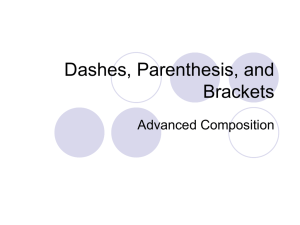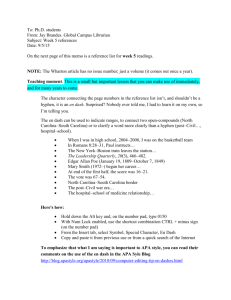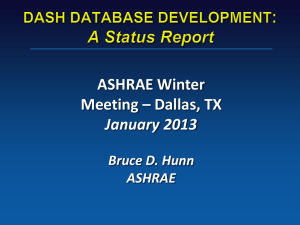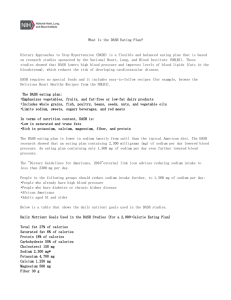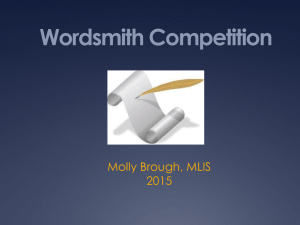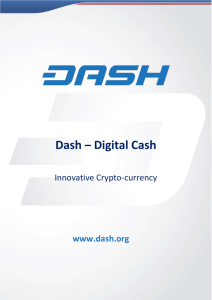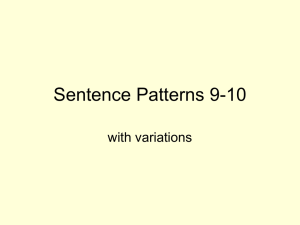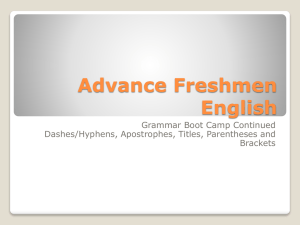qualcomm
advertisement
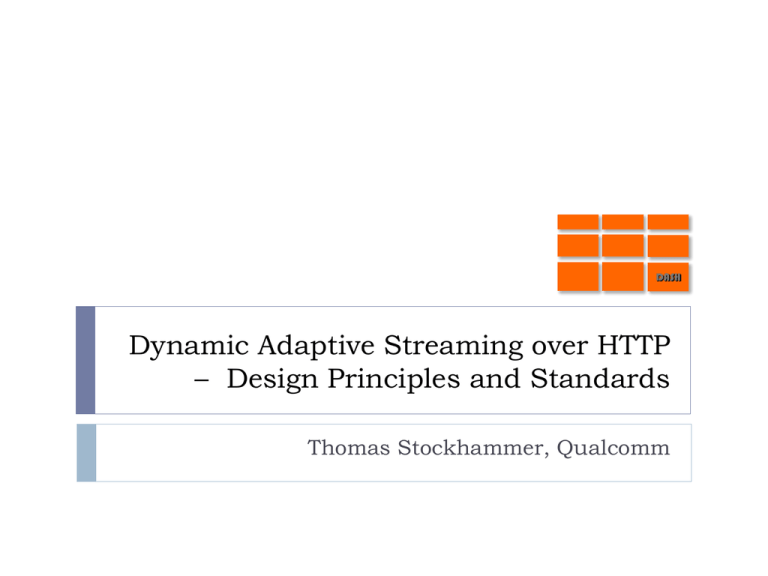
DASH Dynamic Adaptive Streaming over HTTP – Design Principles and Standards Thomas Stockhammer, Qualcomm Why in 3GPP? The Mobile Video Streaming Challenge The mobile video landscape • • Mobile Internet use is dramatically expanding Video traffic is growing exponentially & is a large fraction of the usage The challenges • • Mobile users expect high quality video experience Network operators need to offer quality experience affordably 39 times growth of mobile data 66% mobile video by 2014 Source: Cisco White Paper: Cisco Visual Networking Index: Global Mobile Data Traffic Forecast Update, 2009-2014 Figure 2 Standardization Activities 3GPP completed specification work in April 2010 for Release-9. Forms basis for (is “compatible with”) Open IPTV Forum HTTP Adaptive Streaming (completed in Sep 2010) 3GPP Release-10 DASH (completion target July 2011) MPEG DASH (completion target August 2011) Alignment and compatibility has been a major objective, but at the same time new requirements and simplification had been taken on board Formats, Codecs, Content Protection, Accessibility, 3D, etc. MPEG DASH ISO/IEC 23001-6 is now the master specification Draft International Standard (DIS) 23001-6 available since yesterday 5 months balloting period will start shortly Parallel approval process for extensions to ISO base media FF to support DASH Continuous coordination with 3GPP and other organizations (DECE, OIPF, etc.) Conformance and Reference Software activities kicked off (see WD 23001-7) The good news: Converging standard for adaptive streaming on the way 3 (Some) DASH Design Principles DASH is not: system, protocol, presentation, codec, interactivity, client specification DASH is an enabler It provides formats to enable efficient and high-quality delivery of streaming services over the Internet It is considered as one component in an e2e service System definition left to other organizations (SDOs, Fora, Companies, etc.) It attempts to be very good in what is to be addressed by the standard 4 Enable reuse of existing technologies (containers, codecs, DRM etc.) Enable deployment on top of HTTP-CDNs (Web Infrastructures, caching) Enable very high user-experience (low start-up, no rebuffering, trick modes) Enable selection based on network and device capability, user preferences Enable seamless switching Enable live and DVD-kind of experiences Move intelligence from network to client, enable client differentiation Enable deployment flexibility (e.g., live, on-demand, time-shift viewing) Provide simple interoperability points (profiles) What is specified – and what is not? Media Presentation on HTTP Server Segment Resources located by HTTP-URLs HTTP/1.1 5 DASH Client Media Presentation Description DASH Control Engine on-time http requests to segments HTTP Access Client Media Engines DASH Selected Feature list Live, On-Demand and Time-shift services Independency of request size and segment size (byte range requests) Segment formats ISO base media FF and MPEG-2 TS guidelines for integrating any other format Are codec independent Support for server and client-side component synchronization (e.g., separate audio and video) Support for efficient trick mode Simple splicing and (targeted) ad insertion Definition of quality metrics Profile: restriction of DASH and system features (claim & permission) Content Descriptors for Protection, Accessibility, Rating, etc. 6 Enables common encryption, but different DRM (DECE-like) Forward looking Do the homework Specification completion in the next few months Conformance, interoperability and reference software DASH is rich and simple at the same time Understand more detailed market needs Create profiles as considered necessary Collaborate with system creators on how to integrate DASH Integrate it into the web – what is necessary? Get it deployed Everyone is invited - get involved in and excited about DASH 7 DASH Thank you Comments – Questions - Feedback 8
